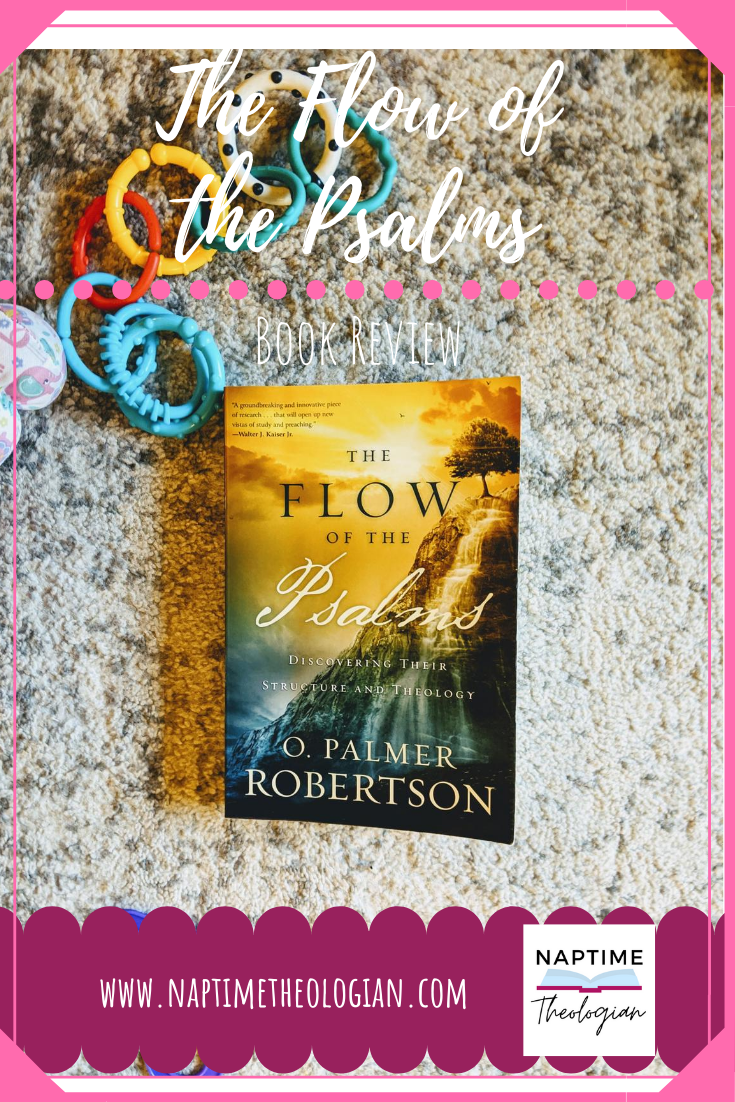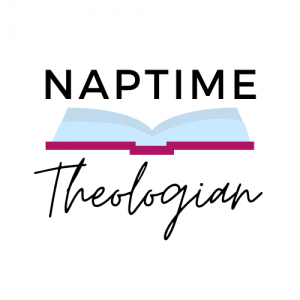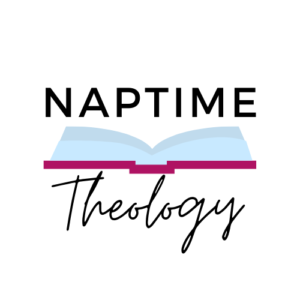Taking on a study of the book of Psalms can be overwhelming at first. There are so many different types of Psalms, so many Psalms in general (150), and so many opinions about how they should go together.
There are many theologians who believe that the book of Psalms does not have a rhyme or reason. That there is no structure and each psalm is randomly selected for its place.
Well, that is where this wonderful book, The Flow of the Psalms comes in. Not only does the author show you the different types of Psalms, but he shows you just how those Psalms all fit together to make up this treasury of poems, songs, and prayers.
As a mom with limited time to study, this book was a home run. Let me tell you 4 reasons why!
1. Readable.
The Flow of the Psalms is a good size book at 266 pages. But that should not deter even the simplest reader from picking it up. Robertson explains his points thoroughly and straightforwardly. There is nothing left to your imagination, which I really enjoyed. His writing was witty, engaging, and convicting.
I used the word “readable” in the heading because I have found that many commentaries are hard to read. They seem stuffy, wordy, and sometimes boring. While this book is not a true verse-by-verse commentary, Robertson goes through almost all the verses in Psalms 1-150 in this book in a way that is helpful and easy to read. I kept wanting to read more and more. And, there is quite a bit of orange highlighter in my copy now!
This book is also readable because Robertson takes huge task of fitting together the entire book of Psalms and somehow breaks it down into bites that are easy to chew and swallow. He builds upon the information in each chapter to bring you all the way from Psalm 1 & 2 to the triumphal, eternal praise of the Savior in Psalms 146-150.
2. Succinct.
Not only is The Flow of the Psalms readable, but it is also succinct. Each paragraph is easily understood and can stand on its own. This is a big deal for me when I may only have time to pick up the book for 5 minutes and read a paragraph or two.
Within the paragraphs there are some diagrams of how the Psalms relate to one another and build upon each other. This was also helpful to picture the specific Psalms in relation to others as I was reading the paragraph. The headings are also helpful, Robertson includes many verses word for word in this book (so I was not having to go find my Bible each time I wanted to read it).
Robertson has included footnotes on each page of this book as well. I found this to be quite helpful because I could simply look down at the footer to find the note instead of searching in the back of the book. Again, this saved a lot of time and I was still able to understand the point of the paragraph once I had this explanation in the footnote.
3. Applicable.
There are many instances in this book where Robertson steps back from finding the flow of the Psalms and applies the Psalms to our own lives. These little sentences were a breath of fresh air in the midst of heavy piecing together. Because, at some points, this book feels like the piecing together of a big jigsaw puzzle. But that’s when the author swoops in with a paragraph like this in reference to David’s prayer in Psalm 51:
“From the example of David as messianic king, God’s people in every age may learn a valuable lesson about the most acceptable way to pray in times of great personal distress. Whenever the believer today feels a need for the Lord’s special intervention, let him focus on the well-being of all of God’s people as the proper framework for seeking personal deliverance. Even the extremely personal matter of receiving forgiveness for sins may be best formulated in the context of a consideration of the blessing that may come on all of God’s people as the individual experiences forgiveness.” [The Flow of the Psalms, pg. 65].
You can bet I have that paragraph underlined and probably written on a notecard somewhere around my house to help me remember. I believe it’s these paragraphs that are needed in books like these to keep your heart focused on how to apply what you are learning in the book.
There’s a lot to learn in this book and the author has really made it easy to apply to my life today.
4. Visual (It has Charts!)
Lastly, I really enjoyed the fact that this book has charts! There are several charts in the back of The Flow of the Psalms that help you visualize the groupings, chapters, and books of the Psalms all as one big picture. This is where the jigsaw puzzle really comes together!
If you are a visual learner like me, then you will be flipping back and forth to those charts as you read just like I did. It was very helpful to have the visual reference when learning about a new book of the Psalms and which Psalms go in that book. Keeping it all together in my head would have been a mess. So I really appreciate having the opportunity to see it all on the paper in the back of the book.
Conclusion
After completing this book in its entirety, I can whole-heartedly say that I recommend you get a copy and read it for yourself! This jigsaw puzzle can be put together one piece (or paragraph) at a time while your baby is napping, playing in the tub, or coloring with water markers. Reading The Flow of the Psalms will be a blessing to your mama heart, no matter how you fit it in.
Buy It Here!
This post contains affiliate links, you can read my full disclosure here.
Related Posts:
The Structure of the Psalms | God’s Faithfulness
How to Understand Psalms 1 & 2
How to Read Lament Psalms | We Need To!




2 Comments